Inter are aiming to secure another Serie A title this season, facing tough competition from Atalanta and Napoli, who are right there with them in the title race.
Known for their quick counterattacking play, Inter plan to leverage their strengths to reclaim the Serie A crown.
This tactical analysis will examine their tactics, from defensive setups to counterattacks that lead to goals.
We’ll analyse both their in-possession and out-of-possession tactics.
Simone Inzaghi joined Inter in 2021 and has won one Serie A title, two Coppa Italia titles, three consecutive Supercoppa Italiana titles, and reached the 2023 UEFA Champions League final.
One of Inter’s greatest coaches, Simone Inzaghi has revolutionised the club after years of inconsistency and Juventus’ dominance in Italian football.
Simone Inzaghi’s Tactical Philosophy
Simone Inzaghi’s tactical philosophy at Inter revolves around defensive compactness and fluid attacking play.
He prefers a 3-5-2 formation, emphasising wing-back involvement and quick transitions; this allows the team to exploit spaces with speed on the wings.
Defensively, he relies on compactness and disciplined pressing to disrupt the opponent’s build-up with a midfield trio that provides a perfect blend of balance.
Inter Milan Build-Up
Inter’s build-up play focuses on finding gaps to initiate their transitions and stretching the opponent’s defensive structures.
Once stretched, they often play through their technically gifted central midfielders, who are some of the best in the world, like Barella, Mkhitaryan, Çalhanoğlu, and Frattesi.
If an opposing team chooses to play a centrally compact defensive shape, Inter adapt by directing play to their wide players.
These wide players start the transition, forcing the opposition to chase them down.
Once the opposition moves to the wide areas to stop this bolting attack, openings in the central areas are created, allowing midfielders to receive the ball in dangerous positions and dictate the game.
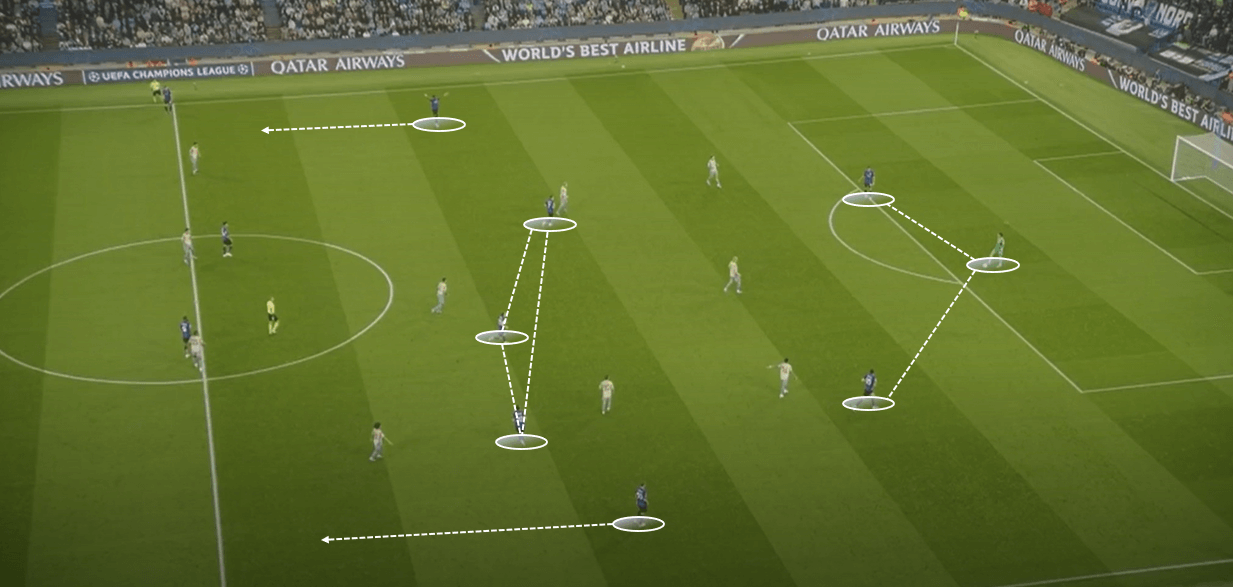
Looking at the example against Manchester City, it’s evident that City doesn’t fall for Inter’s plan of stretching the opponent.
Instead, they maintain a compact central shape.
With the two centre-backs positioned close to the goalkeeper to receive the ball, notice the two wing-backs who are free in space.
If the ball goes to them, the attack can start rapidly.
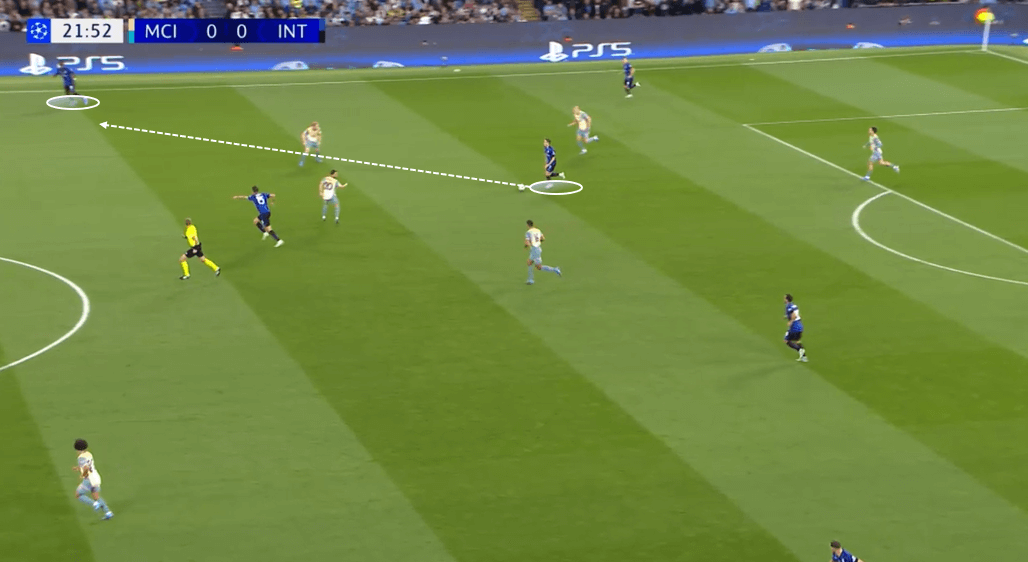
If Inter chooses to play into their central players, Manchester City’s central players will gravitate toward the deep-lying playmaker, in this case, Barella.
This creates a scenario where Barella has options to play vertically or out to the wing-back.
However, the key objective of Inter’s build-up is to ensure the wing-back remains open and always a viable option.
The wing-back’s constant availability provides fluidity in their attack and is crucial for effectively progressing the ball for a quick attack.
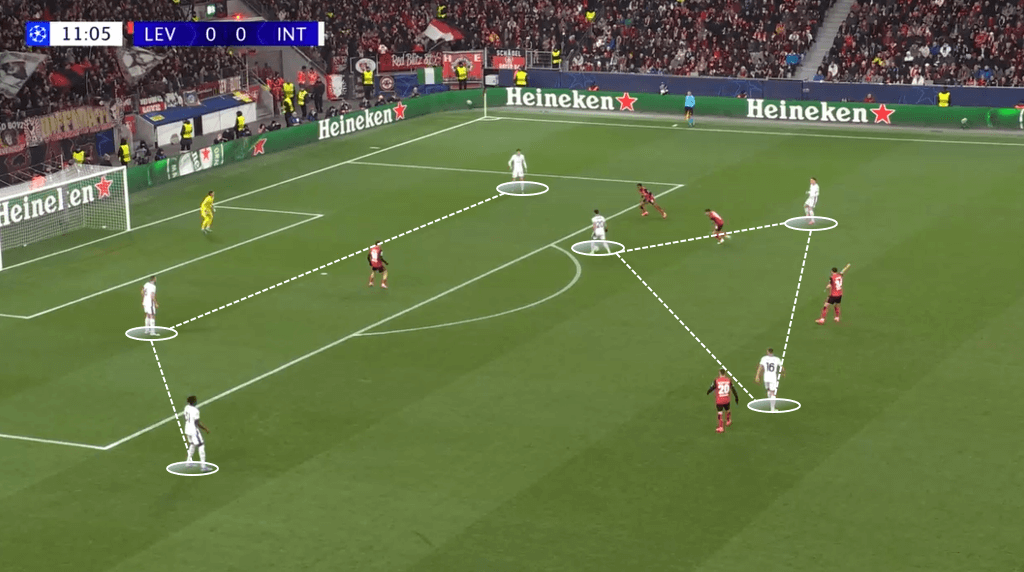
Alternatively, if Inter wants to build up with a three-man backline in front of the goalkeeper, they consistently maintain a triangular midfield shape ahead of it.
One midfielder can drop deep to receive the ball, drawing pressure, and then release it back to the centre-back or goalkeeper for redistribution.
This setup creates a 6v6 scenario at the start of their build-up, involving three defensive players and three midfielders, with no attackers engaged.
It functions like a training drill, focusing on progressing the ball out of this zone to the wing-backs, who can facilitate the transition into attack.
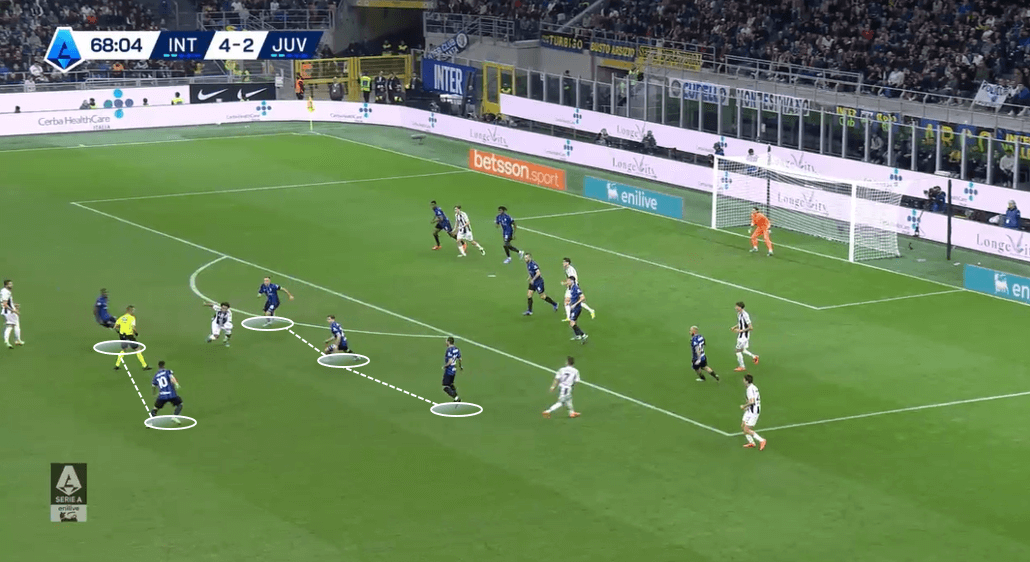
From their pass map of the most recent match, you can clearly see how often Inter are “swinging the rock” across the pitch rather than playing more vertically during the build-up phase and even in parts of the midfield.
They frequently execute quick switches to their full-backs, enabling them to drive up the field.
This repeated switching of the ball from one side to the other aims to stretch the opposition’s defensive structure until a breakthrough opportunity arises.
Inter’s Midfield Transition
We’ve discussed the various ways Inter move the ball from the goalkeeper to midfield to initiate their attack.
But how do they move the ball from midfield to attack so quickly, striking fear into teams with their counterattacks?
The key is their incredible midfield balance.
Their midfield trio is technical, intelligent, and brilliant.
This is complemented by their quick wing-backs, who align themselves with the central midfield triangle, which allows them to transition quickly, making their counterattacks dangerous.
Inter Milan Pass Map Vs Bayer Leverkusen
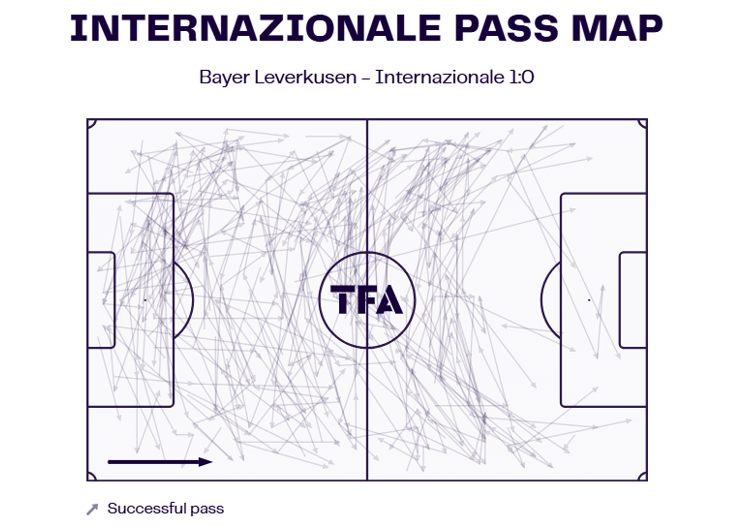
The key to Inter’s counterattacks often lies with Barella, arguably their best player.
Once the ball reaches his feet in midfield, the attackers and wing-backs know it’s time to make vertical runs forward.
Notice Taremi in this image; he isn’t even looking at Barella, but he knows Barella will find him once his head is up.
Dumfries on the wing is also making a forward run, leaving Barella with two excellent options to exploit and drive the attack forward.
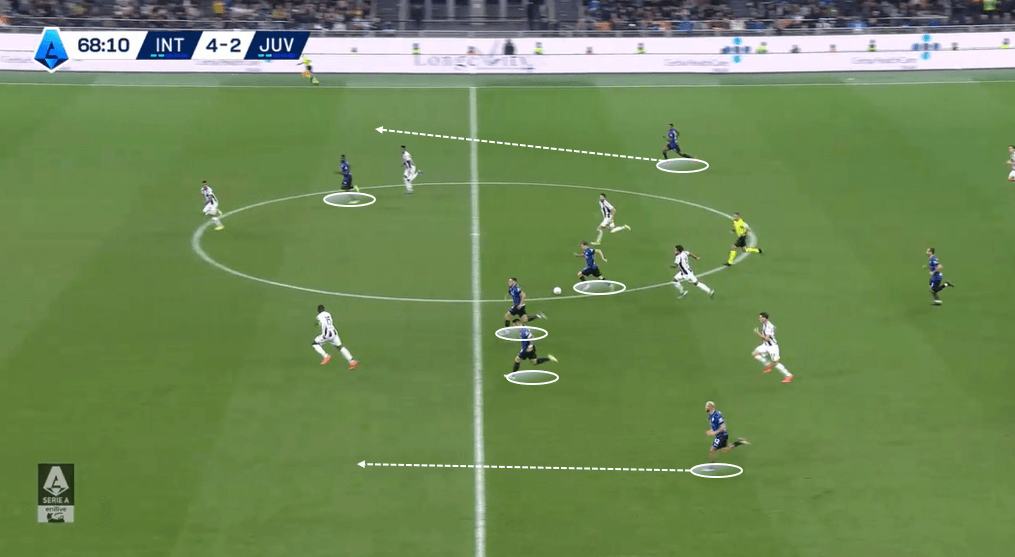
How do Inter set themselves up so effectively for counterattacks?
Look at the image above.
When defending, they often form either a three-man or four-man line just in front of their box, applying high pressure on opponents outside the box who are searching for passing options.
Once they win the ball, their numerical superiority right outside the box allows them to build momentum and quickly transition forward.
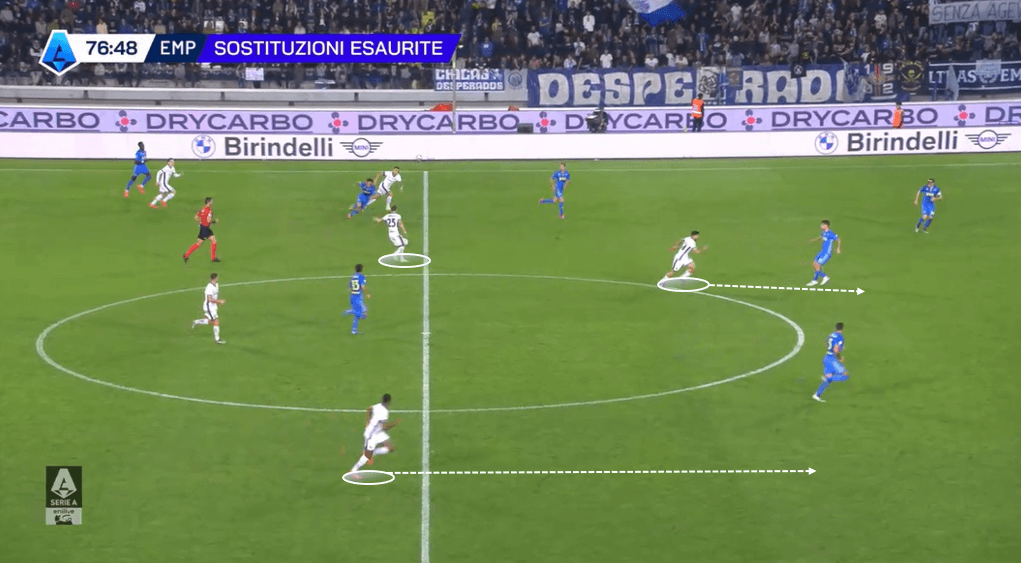
In the image above, the same players from the previous image make forward runs, carrying the momentum of the press into the attack.
As usual, Barella is central to this, carrying the ball and looking to make the final pass into the attacking third.
His options include the players who were part of the defensive line moments ago and the wing backs who are now pushing forward into attacking positions.
Nicolo Barella Pass Map
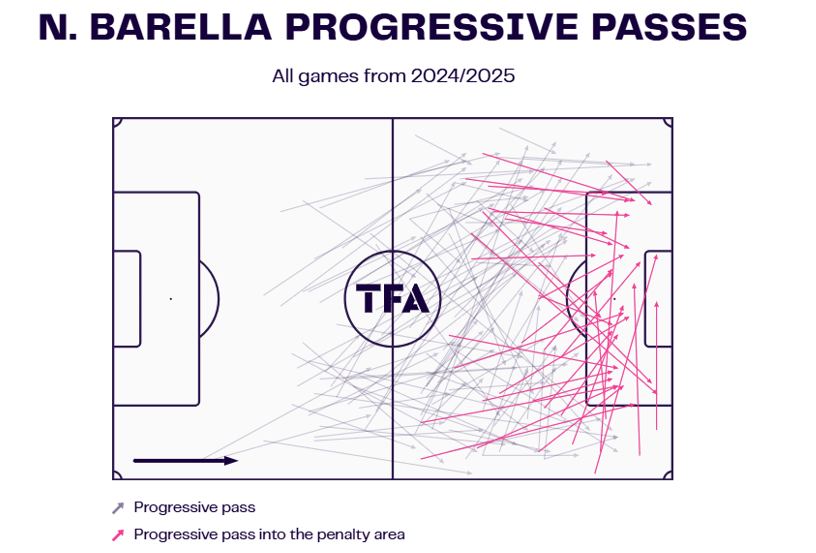
Barella’s progressive pass map highlights his critical role in delivering final passes into the attacking third.
He consistently sets up his teammates to run into space with the ball and distributes passes evenly to both his left and right.
Typically, players prefer creativity on either flank, but Barella is effective on both flanks, which makes him an exceptional playmaker.
Inter Milan’s Defensive Stability
Inter is renowned for their towering centre-backs, who are physically dominant and exceptional on the ball.
Their tactical discipline in the backline is key to shutting down attacks, even against Europe’s best teams and in-form players.
Their centre-backs consistently rise to the occasion in big matches, keeping their opponents quiet.
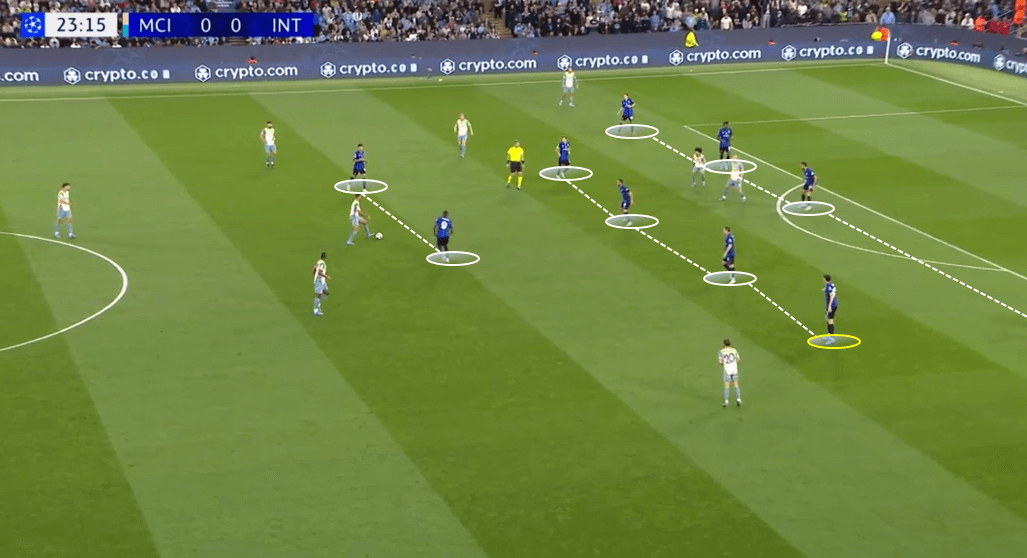
Inter almost always operates in a 3-5-2 formation, with the three centre-backs positioned narrowly while the wing-backs handle the hard work on the flanks.
Due to Barella’s smaller size, he isn’t typically part of the double pivot positioned just in front of the back three.
Instead, the double pivot provides cover for the half-spaces to ensure the three-man backline remains covered.
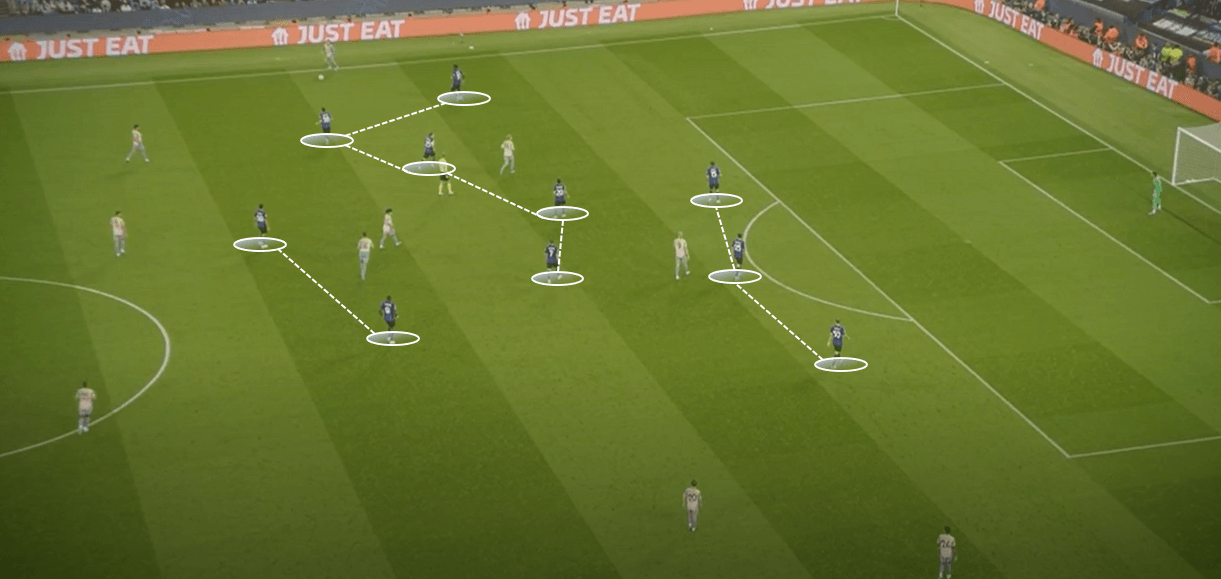
What’s interesting about Inter’s system is the centre-back’s ability to step in and out of the back three.
For example, Bastoni might leave the backline to join midfield, creating a temporary 4-4-2 shape.
When this happens, the wing-back tucks in to maintain defensive coverage.
Thanks to their physicality and agility, Inter’s centre-backs have the freedom to step up into midfield when needed, helping to intercept vertical passes and close down spaces in behind.
This flexibility adds another dynamic layer to their defensive discipline and tactics.
Alessandro Bastoni Analysis
As Alessandro Bastoni is the main man in Inter’s backline, let’s examine his defensive territory map and progressive pass map more closely.
Alessandro Bastoni Progressive Pass Map
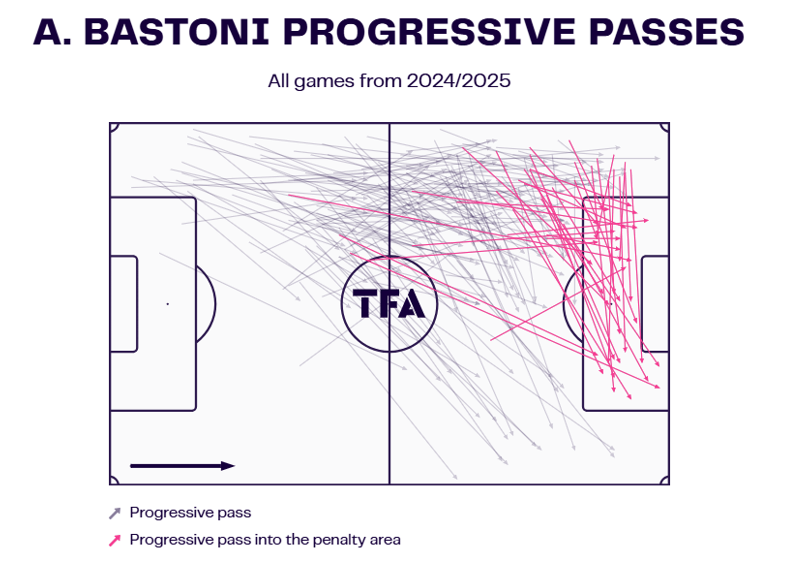
From his defensive territory map, you can see how much of the pitch he covers with defensive actions.
Take note of the interceptions he makes right on the edge of the box and inside it, playing the most vital role in the backline by getting the ball out of danger.
Alessandro Bastoni Defensive Territory Map
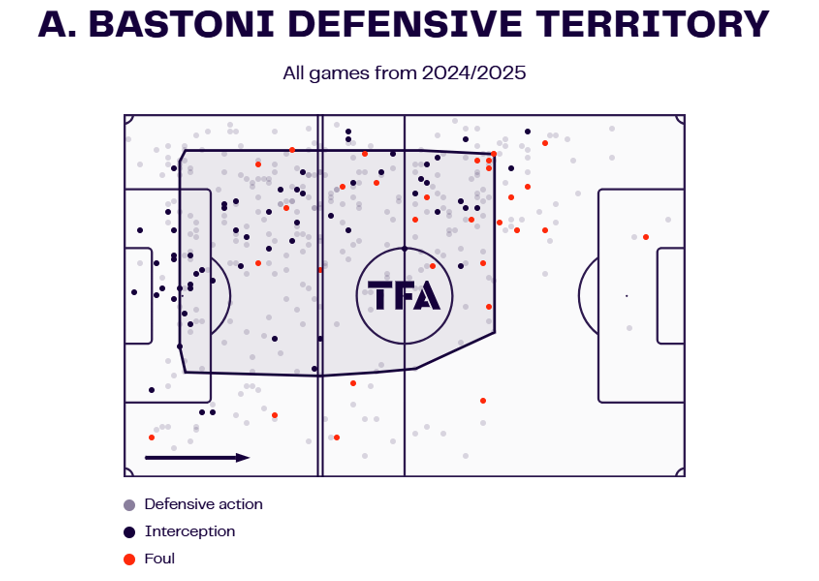
Bastoni is exceptional with his passing abilities, arguably one of the best, if not the best, centre-backs in the world with the ball at his feet.
His technical skill is so advanced that he could even play as an attacking midfielder.
His progressive pass map highlights how crucial he is in delivering long balls, particularly to the wingback on the left.
Now, notice the left side of the opponent’s penalty box. He’s in a position almost like a winger.
From here, he sends in crosses. Bastoni’s underrated crossing ability shows just how remarkable he is on the ball.
Conclusion
Inter have the best counterattacking tactics in world football and have maintained this status for quite some time.
Their strategic build-up play is incredibly difficult to defend against.
They have a backline of physically yet technically gifted players and a balanced midfield where every player can perform as a 6, 8, or 10.
Despite fierce competition at the top of Serie A this season, Inter stand out as the strongest club and a clear favourite to claim the title once again.

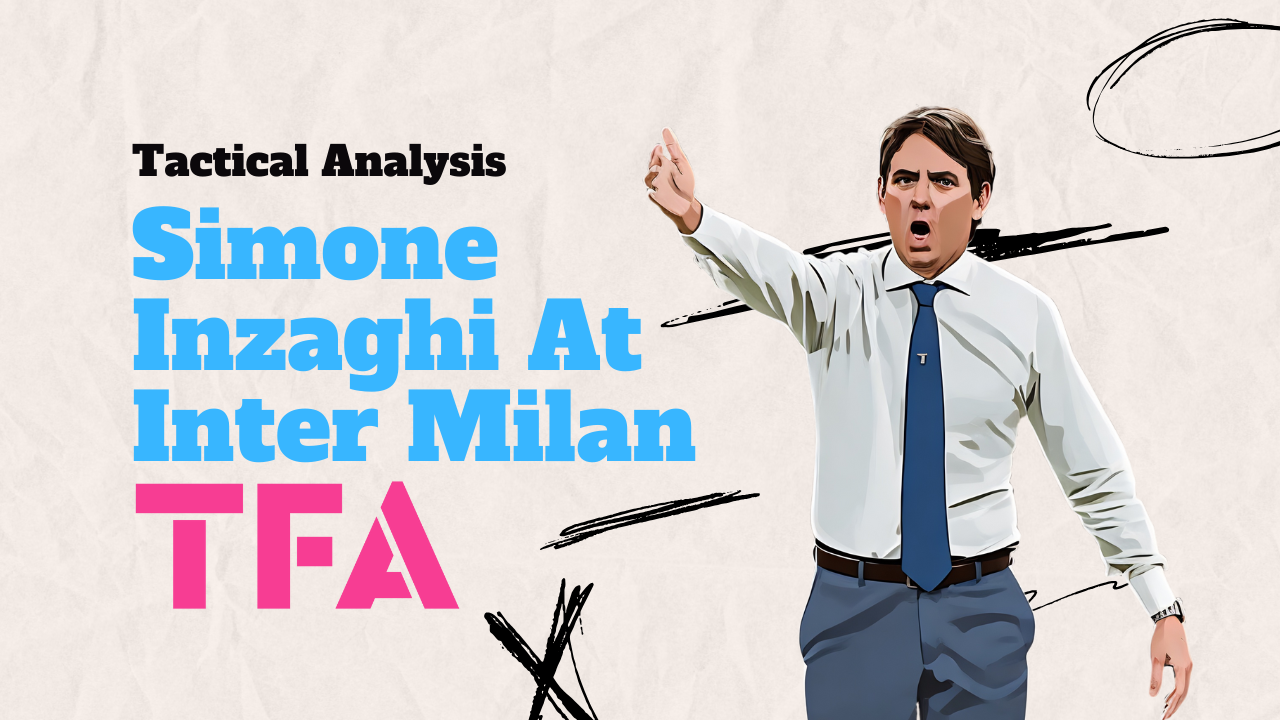



Comments